OnePlus 6 vs. iPhone X: Can the Flagship Killer Steal Apple's Crown?
OnePlus looks like it's produced another budget-beating phone with the OnePlus 6. But how does it stack up against Apple's iPhone X?
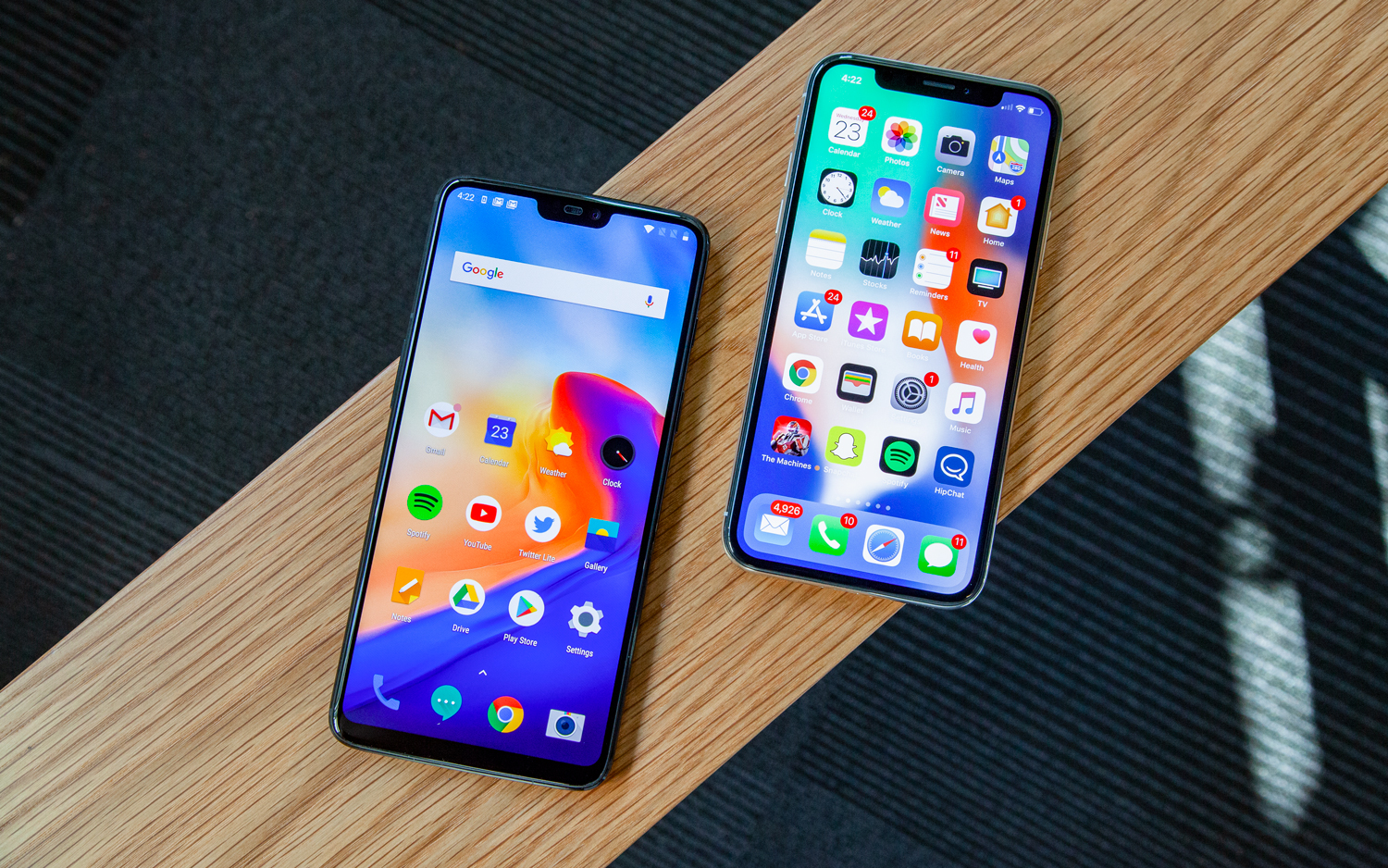
Editor’s Note: This article was originally published on May 19. We’ve updated it with display, camera and benchmark comparisons now that we’ve reviewed the OnePlus 6.
Like many smartphones these days, the OnePlus 6 features an iPhone X-style notch on its display to expand the available screen real estate. But OnePlus didn't make a name for itself by simply copying other phones. The company built up a passionate fanbase by simply putting features found on premium phones on devices that cost hundreds of dollars less. The OnePlus 6 is in line with that philosophy.
The OnePlus 6 also features a bigger display than the $999 iPhone X, more RAM and fast charging out the box. But the iPhone X has been our best phone overall for a reason, thanks in part to is blazing A11 Bionic processor, awesome OLED display and the easy-to-use Face ID. Now that we’ve had the chance to put the OnePlus 6 through a battery of tests, it’s clear that it can hold its own against Apple.
Specs
| OnePlus 6 | iPhone X | |
| Price | $529/$579/$629 | $999/$1,149 |
| OS | Android 8.1 Oreo with OxygenOS | iOS 11.3 |
| Screen Size (Resolution) | 6.28-inch AMOLED (2280 x 1080) | 5.8-inch Super Retina OLED (2436 x 1125) |
| CPU | Qualcomm Snapdragon 845 | Apple A11 Bionic |
| RAM | 6GB/8GB | 3GB (based on teardowns) |
| Storage | 64GB/128GB/256GB | 64GB/256GB |
| microSD Slot | No | No |
| Rear Camera | Dual: 16 MP (f/1.7) with OIS, 20 MP (f/1.7) | Dual: 12 MP (f/1.8), 12 MP (f/2.4) telephoto |
| Front Camera | 16 MP (f/2.0) | 7 MP TrueDepth |
| Battery Size | 3,300 mAh | 2,716 mAh (based on teardowns) |
| Battery Life | 10:33 | 10:49 |
| Water Resistance | None | IP67 |
| Size | 6.1 x 3.0 x 0.3 inches | 5.7 x 2.8 x 0.3 inches |
Design
Anyone making the "OnePlus copies Apple" argument has probably spent the past week pointing at the OnePlus 6's 6.28-inch display with a triumphant grin. The new OnePlus phone sports a notch dipping down into its otherwise expanded display.
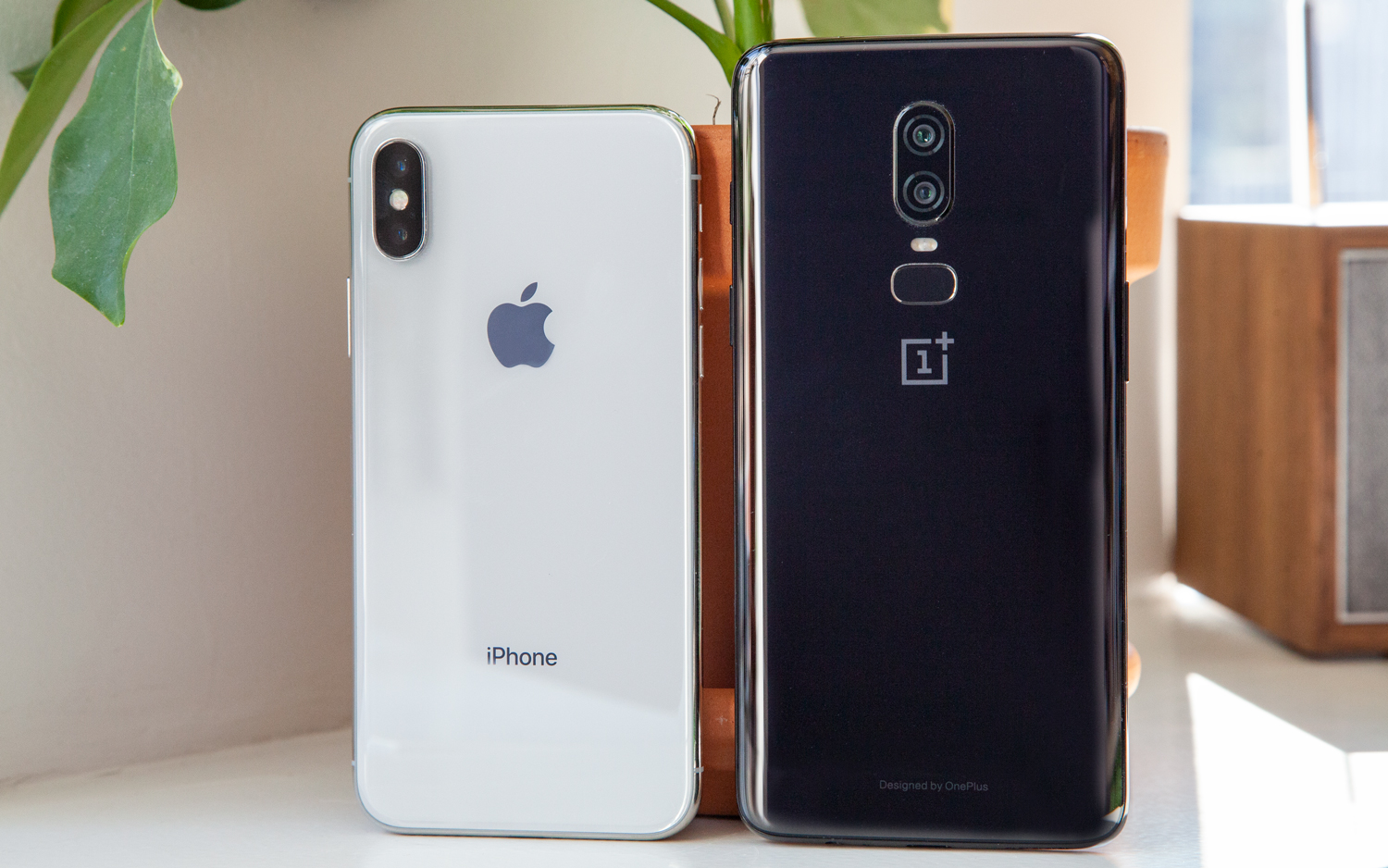
OnePlus might counter that the 6's notch is smaller than the one on the iPhone X (though the iPhone X's notch houses sensors to power features like Face ID unlocking), and you can disguise the notch with a software setting if you really don't like it. The anti-notch crowd will insist that doesn't mean the feature is no longer there, but rather just better hidden.
Where the OnePlus 6 takes a different path from the iPhone X is on the back of the phone. Apple went with an all-glass design on its flagship phone, in part to enable wireless charging. The OnePlus 6 also uses a glass enclosure, ditching the matte aluminum of the OnePlus 5T. However, OnePlus also treated the back of its new phone with a manufacturing process that gives it a ceramic feel.
MORE: iPhone X Clones — All the Notch Phone's Coming in 2018
Get instant access to breaking news, the hottest reviews, great deals and helpful tips.
Apple offers the iPhone X in Space Gray or Silver. You can order the OnePlus 6 in either Midnight Black or Mirror Black; a Silk White version goes on sale in June.
Because the OnePlus 6 has a larger display — the iPhone X's screen is 5.8 inches — it's noticeably larger than the iPhone X, and it felt a little bit bulky when we carried it around. The OnePlus measures 6.1 x 3 x 0.3 inches, making it taller and wider than the 5.7 x 2.8 x 0.3-inch iPhone. The phones weigh about the same — 6.2 ounces for the OnePlus 6 and 6.1 ounces for the iPhone X.
Winner: iPhone X
Display
Speaking of screens, both phones offer an OLED panel, though resolution on the iPhone X is sharper (2436 x 1125, compared with 2280 x 1080 for the OnePlus 6). The iPhone X fares very well when stacked up against other leading smartphones with OLED panels, impressing us with both its brightness and its natural colors. We also like the superior viewing angles the iPhone X offers.
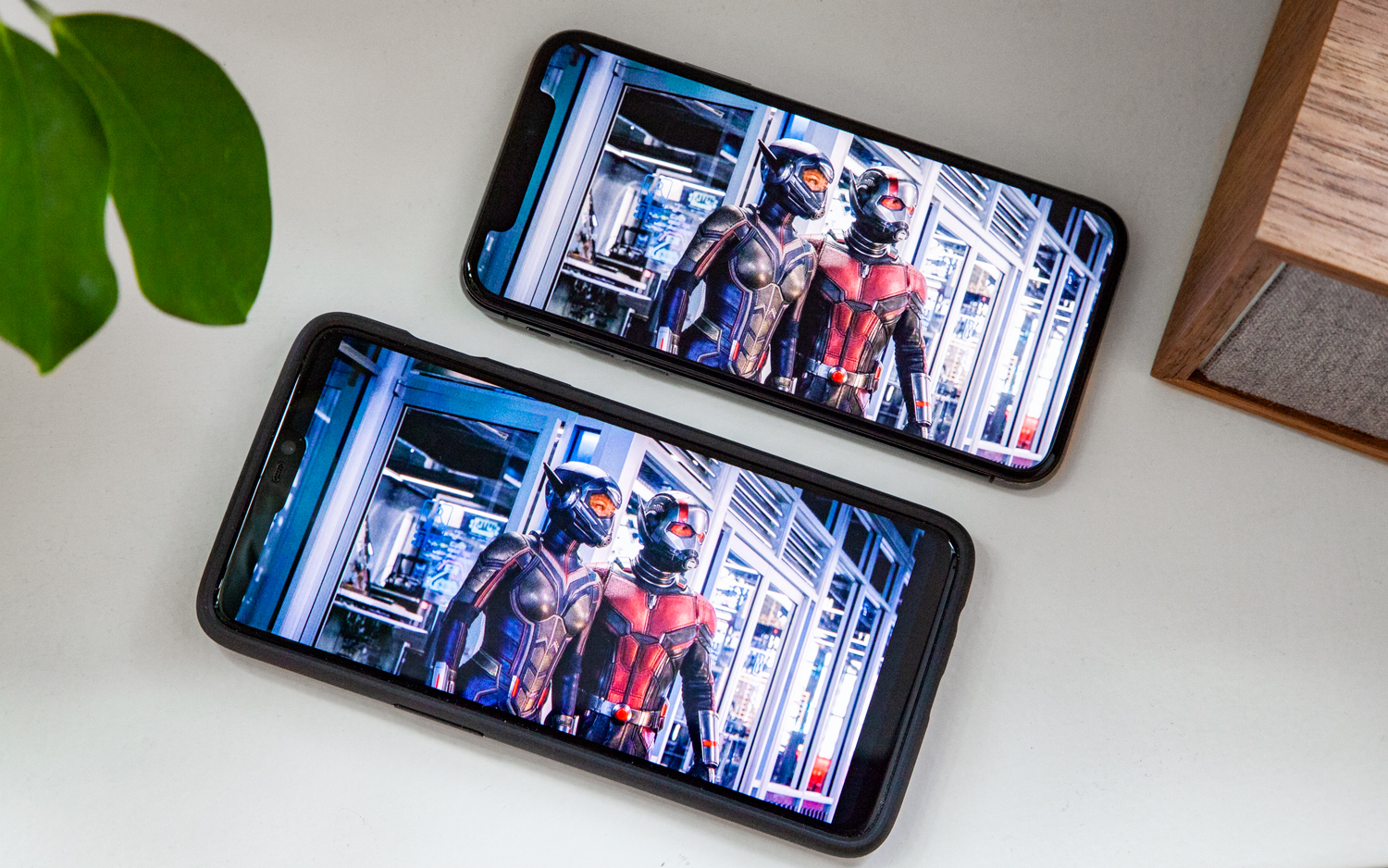
But the OnePlus 6 compares very favorably to the iPhone X. We measured peak brightness at 574 nits, exactly the same as Apple’s phone. The OnePlus 6 displays a wider spectrum of colors, 240.3 percent of the sRGB color gamut versus 204.8 percent for the iPhone X. And while Apple’s phone displays colors slightly more accurately — it has a Delta-E reading of 0.27 to the OnePlus 6’s 0.39 — that’s essentially a push.
Where the OnePlus 6 enjoys an edge is in choice. The OnePlus phone offers different display profiles, giving you the ability to adjust the screen to your liking.
Winner: OnePlus 6
Cameras
The cameras on OnePlus' previous phones have been solid enough that you don't feel like you're sacrificing image quality for a lower-priced phone, but they've never really beaten the top camera phones at their own game. Some of the changes OnePlus introduced to the camera setup in the OnePlus 6 aim to put up an even stronger challenge to a top-flight camera phone like the iPhone X. And in a few instances, when we put OnePlus 6 up against the iPhone X’s camera, the two phones were evenly matched.
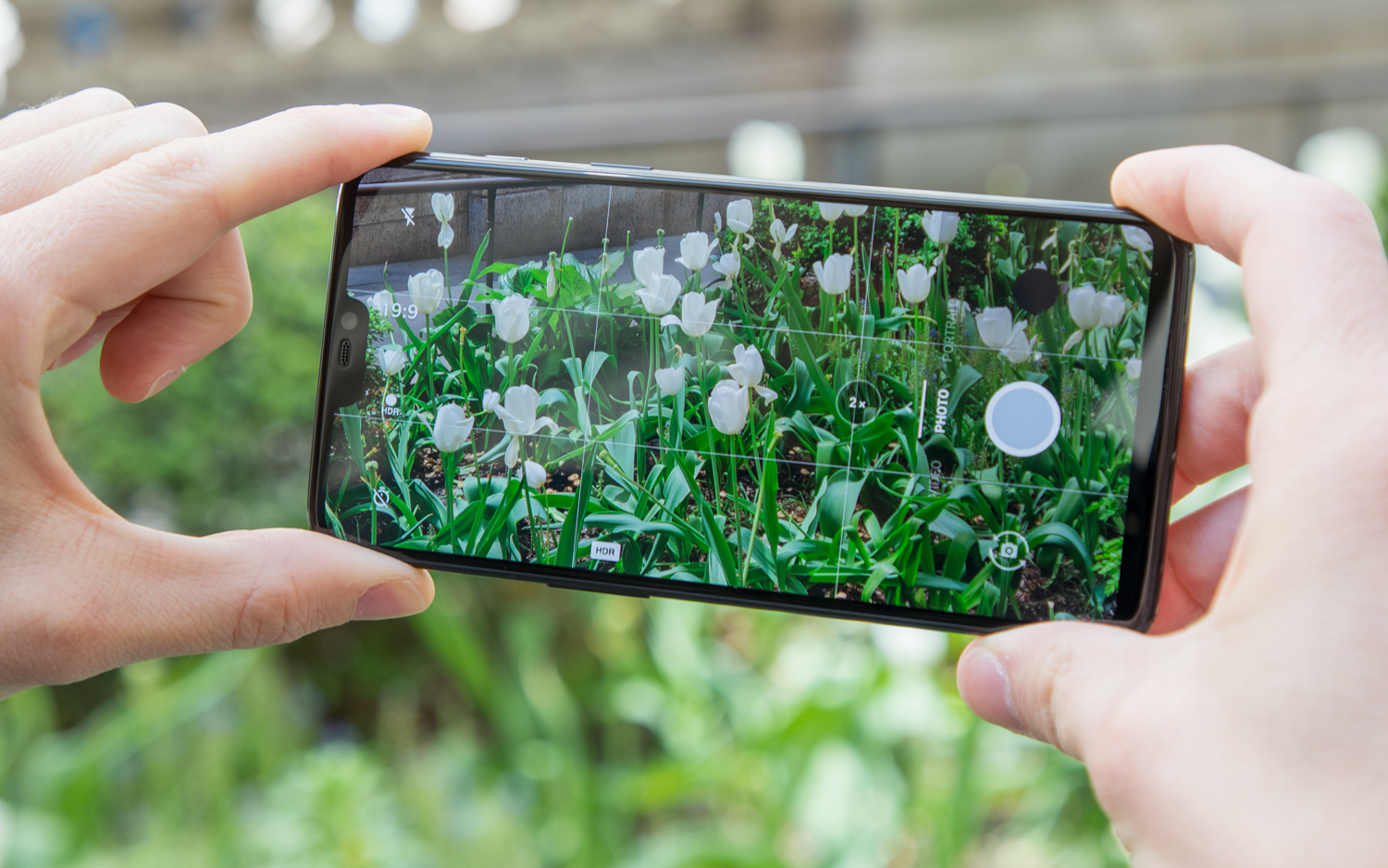
While the dual rear cameras on the OnePlus 6 have the same number of megapixels and the same aperture as the OnePlus 5T's — once again, the phone features 16-MP and 20-MP f/1.7 cameras — OnePlus made a few tweaks. The OnePlus 6 has a larger image sensor than the 5T, and its sensor pixels are larger, too.
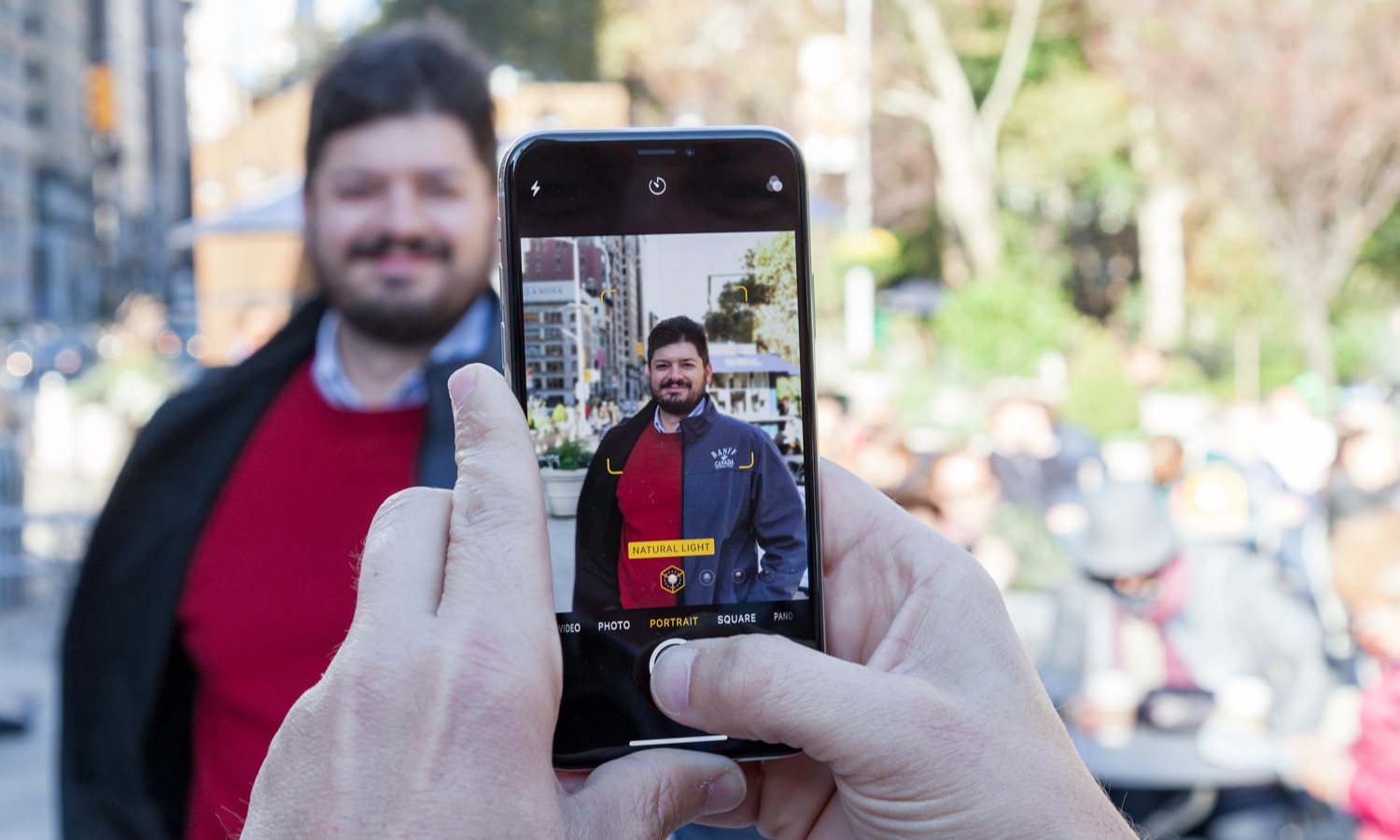
OnePlus also added optical image stabilization to its new phone. All of this is with an eye toward producing brighter photos with less blurriness, particularly in low light. Interestingly, the iPhone X's camera tends to struggle in low-light settings.
When we snapped a picture of a clock and a plant in our darkened studio, the iPhone X enjoyed a slight edge over the OnePlus 6. While the image captured by the OnePlus 6 looks sharper with less noise, you see more in the iPhone X’s shot. The picture just looks brighter and the white balance is noticeably better.
Outdoors, it’s a more evenly matched fight. The OnePlus 6 produces a warmer shot of a New York park, and the colors in the photo pop. Our photographer thought the iPhone’s version looked a little dark, though the colors seem more realistic to my eye. This is an instance where the cameras on the two phones are so evenly matched, it comes down to your personal preference.
But the iPhone X continues to enjoy a big edge with its cameras’ support for a 2x optical zoom. Apple's phone features a pair of 12-MP cameras — a wide-angle lens with an f/1.8 aperture and an f/2.4 telephoto lens. The differing focal lengths help support a 2X optical-zoom feature you won't find on the OnePlus 6.
You can see how that advantage translates in these shots of a statue. The iPhone X’s effort looks sharper, and you can really see the texture of the statue come through in the photo. That level of detail isn’t visible in the OnePlus 6’s shot, which also looks a little blurrier, as that phone is forced to rely on a digital zoom for close-ups.
Neither phone really excelled when we tried out the Portrait Mode using their respective rear cameras. The iPhone X shot looks completely blown out, with our coworker Jorge looking like he’s floating in space. At least, the telephoto lens on the iPhone X gets the perspective right. Because there’s no telephoto lens on the OnePlus 6, you get a bit of a fisheye effect, though the background blur seems a bit more stylish. (Jorge’s left shoulder and arm seem to have gotten caught up in the blur, however.)
Up front, the 16-MP selfie cam on the OnePlus 6 is capable of adding bokeh effects to photo backgrounds in a new software-powered Portrait Mode. The 7-MP TrueDepth camera on the iPhone X supports the same feature.
MORE: Best Smartphones on the Market Now
The OnePlus 6 follows the trend of smartphone cameras supporting super-slow-motion video, though it doesn't go quite as far as the ability to shoot video at 960 frames per second like theSamsung Galaxy S9 andSony Xperia XZ2 do. Instead, the OnePlus 6 can slow down video to 480 fps at 720p resolution. That's double the 240 fps maximum the iPhone X supports, though Apple's phone records its slow motion at a higher, 1080p resolution. We plan to update our tests of super slo-mo features in top smartphones to include the OnePlus 6 very soon.
Winner: iPhone
Performance
Like other leading Android phones released in 2018, the OnePlus 6 is turning to Qualcomm's Snapdragon 845 chipset, which promises around a 30-percent improvement over last year's chip while also increasing power efficiency. And OnePlus’ new phone definitely takes advantage of the improved processor, plus its extra RAM (6GB or 8GB, depending on which model of the OnePlus 6 you buy).
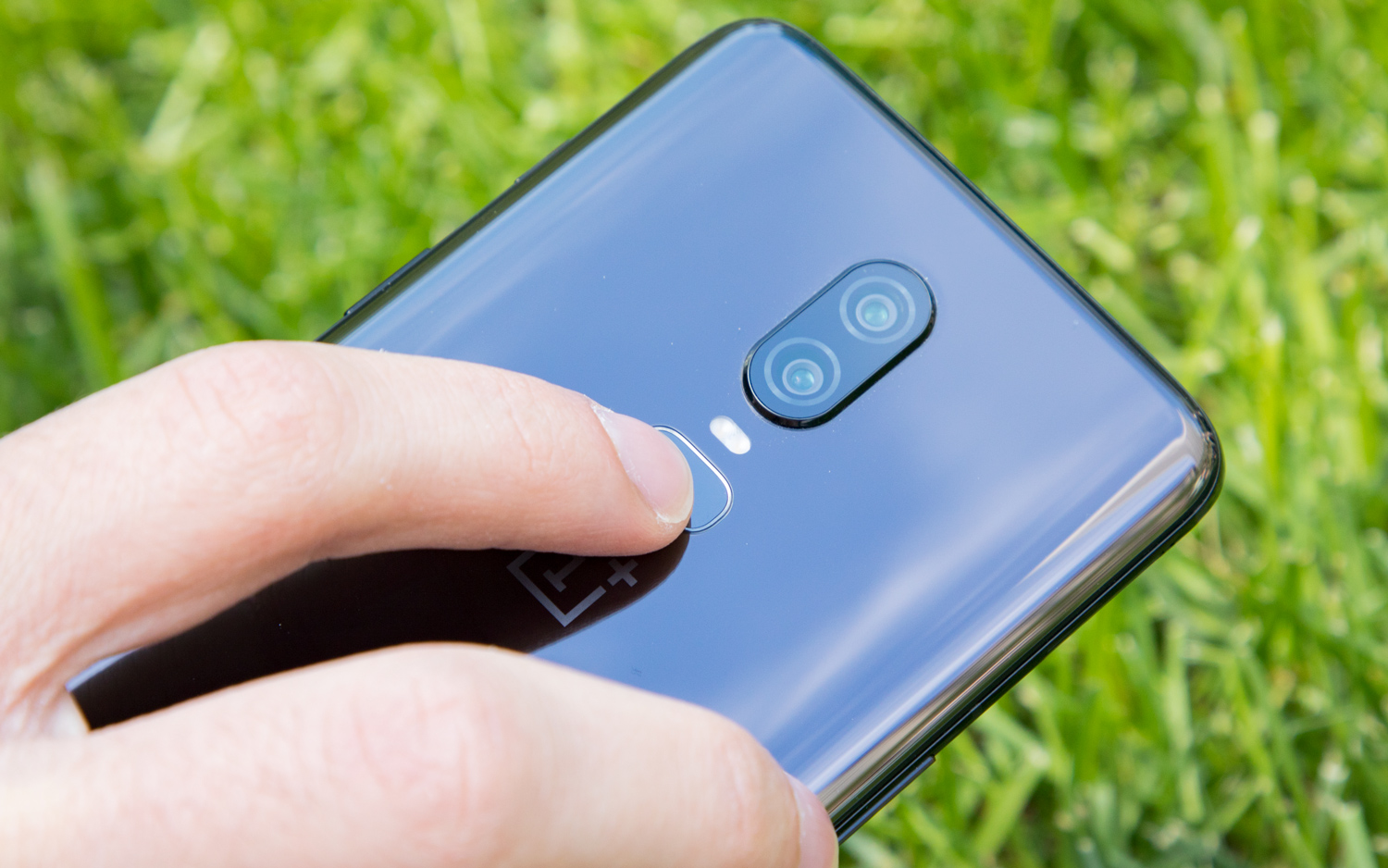
We tested a OnePlus 6 with 8GB of RAM, and it posted a score of 9,098 in the Geekbench 4 general performance test. That’s well ahead of other Android phones that use a Snapdragon 845, including the LG G7 ThinQ (8,566) and Galaxy S9+ (8,295). The OnePlus 6 also outperformed its fellow Android devices in 3D Mark's Sling Shot Extreme OpenGL ES 3.1 graphics test.
But that’s not good enough to beat the numbers the iPhone X puts up with its A11 Bionic chipset. Apple’s phone scored 10,357 on Geekbench 4. The OnePlus 6 gets closer to that than any Android phone before it, but Apple’s devices are still the mobile speed kings.
MORE: The Best Cellphone Plans for Families and Individuals
Readers have asked whether those numbers translate to a noticeable difference in the real world. They can, depending on the task you want to perform. We have phones transcode a 2-minute 4K video into 1080p using Adobe Premiere Clip. The iPhone X polishes off that task in 47 seconds. However, it took the OnePlus phone 3 minutes and 45 seconds to transcode the video, a performance that trailed other leading Android phones.
Winner: iPhone X
Battery Life and Charging
Like the OnePlus 5T before it, the OnePlus 6 relies on a 3,300 mAh battery to stay powered up. But that doesn’t necesarily translate to equal battery life, possibly because the OnePlus 6 has a bigger screen to power. While the 5T lasted 11 hours and 22 minutes on our battery test, which consists of continuous web browsing over T-Mobile's LTE network, the OnePlus 6 ran out of juice after 10 minutes, 33 minutes.
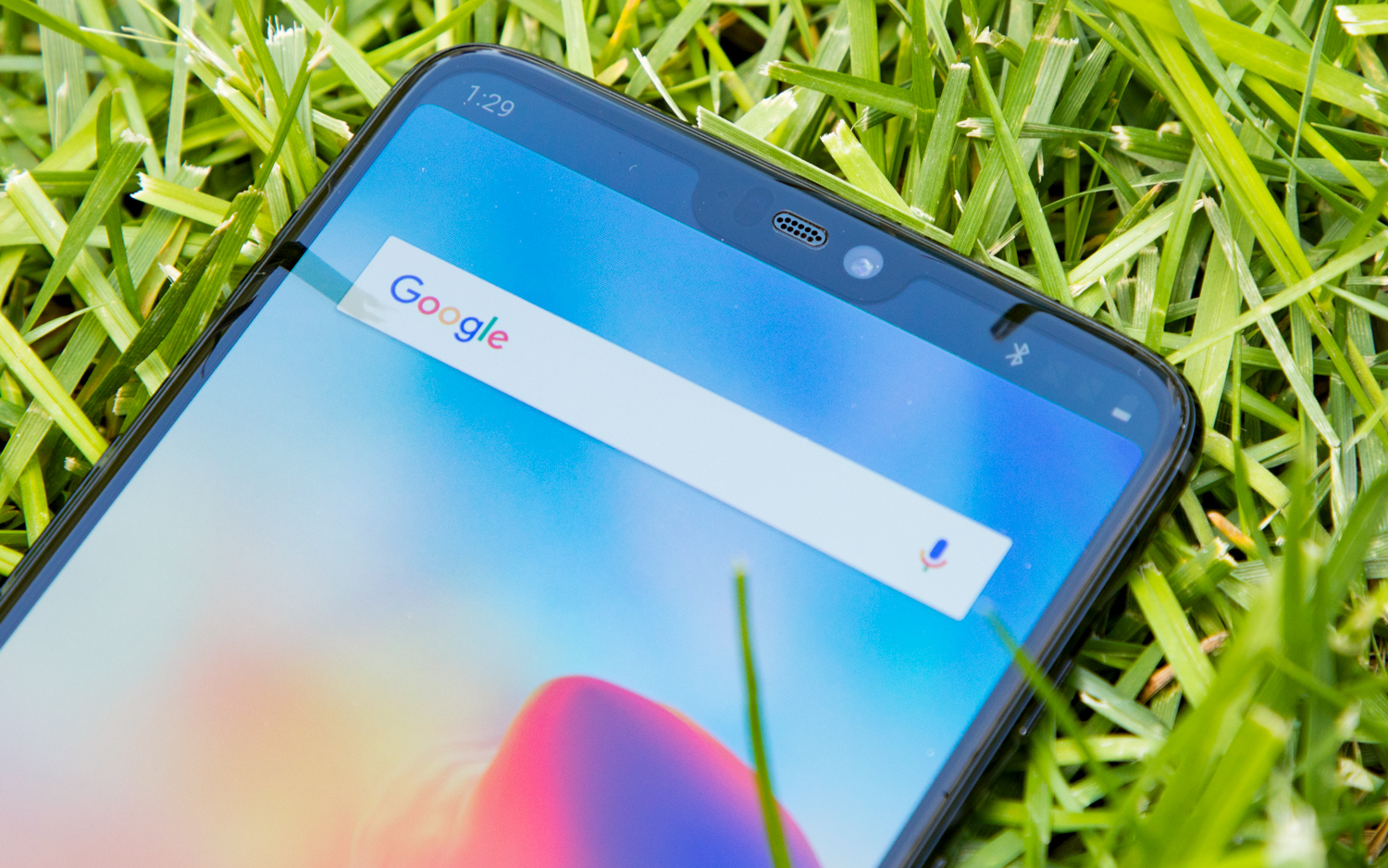
That may be disappointing relative to previous OnePlus phones, but it’s right in line with the iPhone X’s performance. Apple's phone held out for 10:49 when we ran it through our battery test, only 16 minutes longer than the OnePlus 6.
The OnePlus 6 enjoys an edge over the iPhone X, thanks to OnePlus' Dash Charge technology, which allows the phone to quickly add juice with an included charger. Using that adapter to recharge the OnePlus 6, the battery reached 60 percent after half-an-hour of charging.
The iPhone X got a respectable 50-percent charge after 30 minutes, thanks to its fast-charging feature. But Apple sells its fast-charging adapter separately, whereas OnePlus' comes in the box with the phone.
Winner: OnePlus 6
Special Features
While OnePlus makes Android phones, its devices actually run on the company's own OxygenOS, which, on the OnePlus 6, is a skin of Android Oreo. That allows OnePlus to add a number of its own features to the phone, highlighted by a Face Unlock feature. Unlike Face ID on the iPhone X, however, you can't verify mobile payments with Face Unlock.
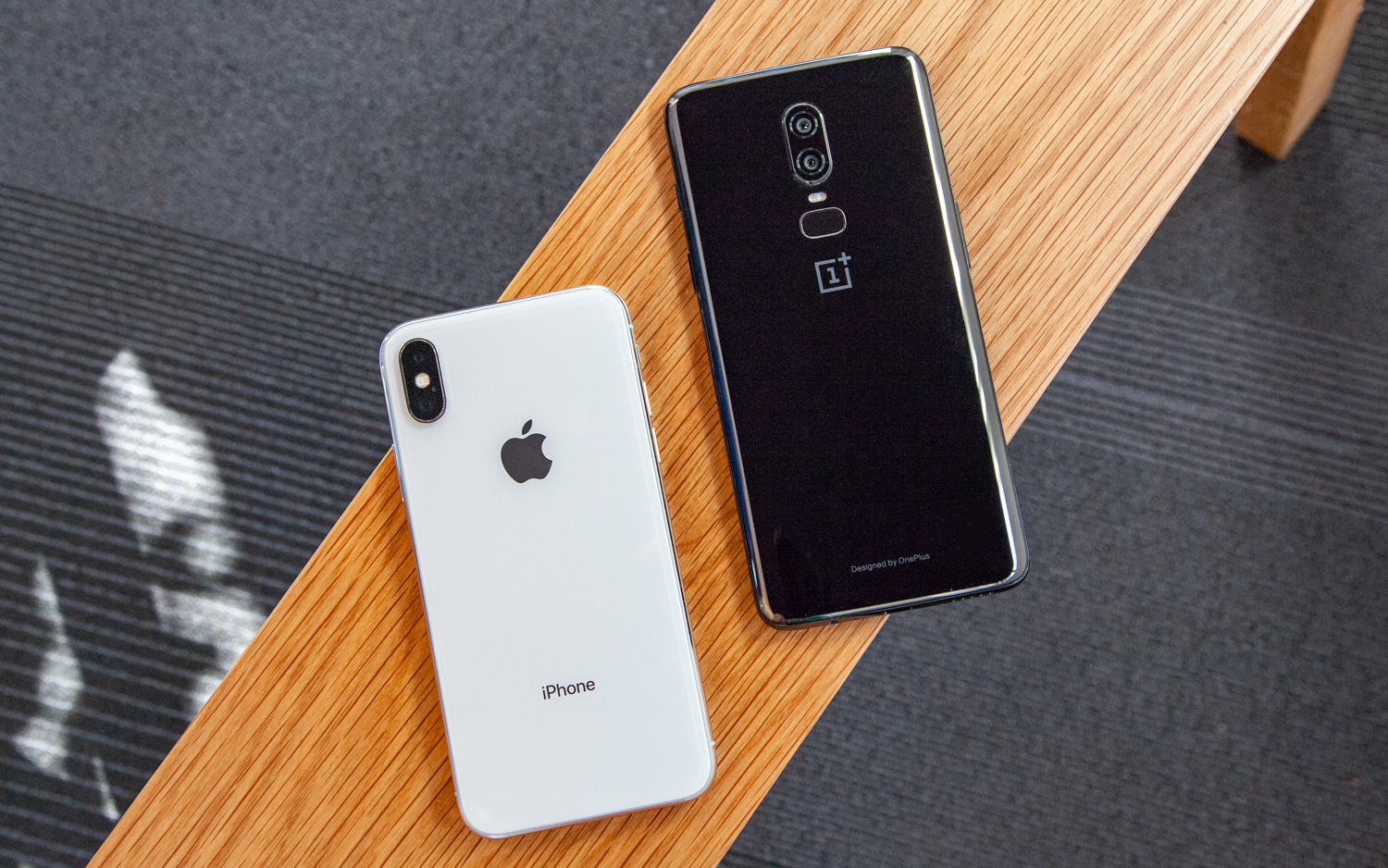
Other noteworthy software features added to the OnePlus 6 include gesture-based navigation, another feature reminiscent of the iPhone X. You'll also find a mode to prioritize modem bandwidth for multiplayer games such as PUBG Mobile over other background apps, and a Gaming Battery Saver setting for games built with Unity's gaming engine.
MORE: iPhone X Hands-on: The iPhone, Nearly Perfected
Meanwhile, the iPhone X has iOS 11 and the instant access to software updates that all Apple phones enjoy. Besides powering Face ID, the iPhone X's front camera supports Animoji, the animated 3D emoji that use cartoon animals to mimic your facial expressions. It's a gimmick, sure, but it's a pretty popular one.
Winner: iPhone X
Price and Availability
When it comes to price, there's no argument as to who's got the more attractively priced phone. Even with a $30 price hike over the OnePlus 5T, the $529 OnePlus 6 is still $470 cheaper than the iPhone X. Even if you were to buy the most expensive OnePlus 6 available — the 256GB model that includes 8GB of RAM — you're still spending $370 less than you would for the 64GB iPhone X.
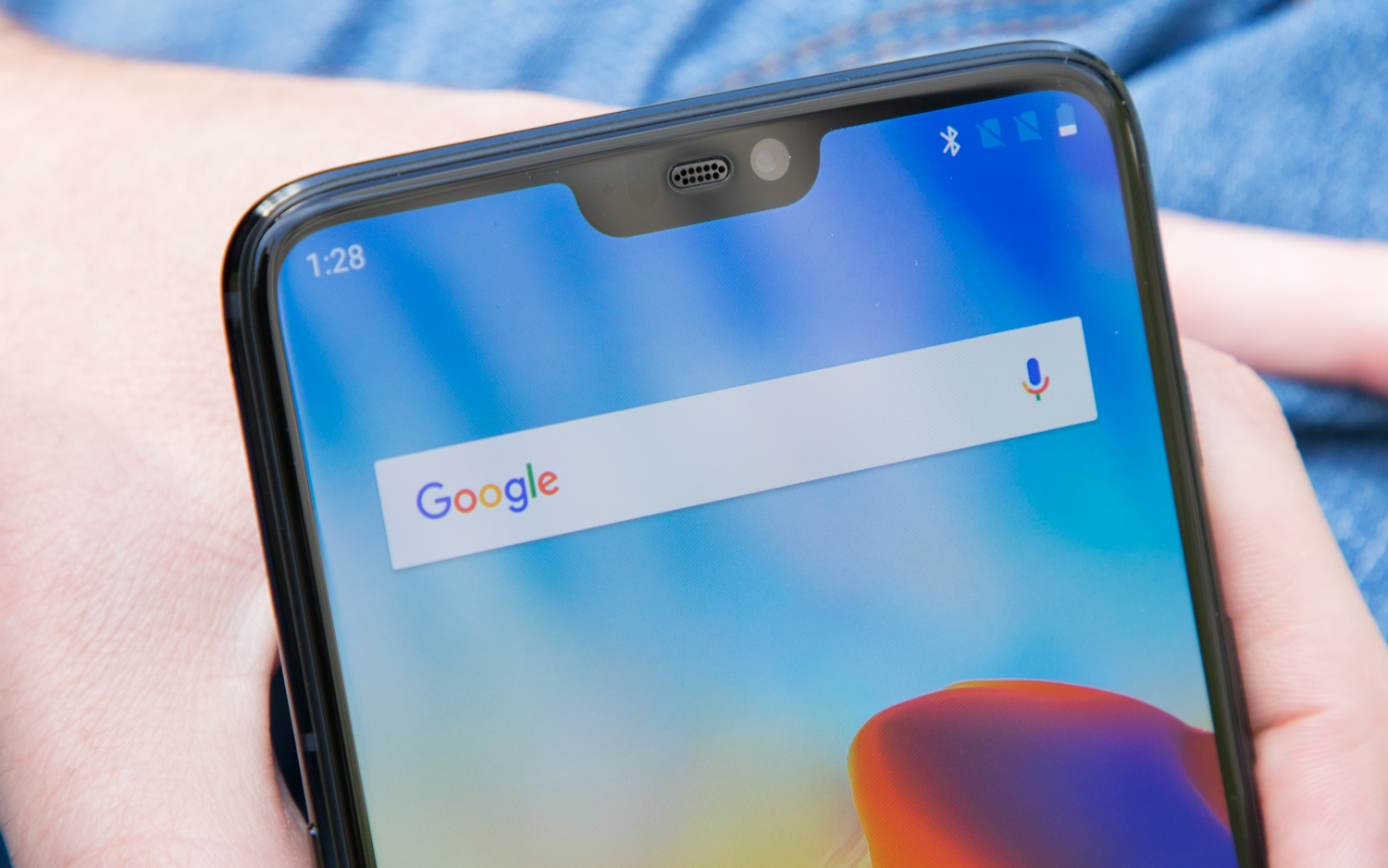
Apple can claim one advantage over OnePlus in terms of availability: Its phones work on both GSM and CDMA networks, so you can use them with any of the four major U.S. carriers or the prepaid brands that piggyback on those networks. In the U.S., OnePlus' phones work only with GSM-based carriers such as AT&T and T-Mobile.
Apple also produces phones in much greater volume than OnePlus. Historically, OnePlus has estimated how many phones it can sell in the U.S. and makes exactly that quantity. If that supply were to evaporate, OnePlus would simply declare that the phone is out of stock and turn its attention to the next model.
MORE: Best Places to Buy and Sell a Used iPhone
That happened with both the OnePlus 5 and 5T, each of which was available for roughly five months. A smaller supply of phones is unlikely to be much of an issue now that OnePlus 6 have just begun, but it will be a consideration a few months from now.
Winner: OnePlus 6
Outlook
| Phone | OnePlus 6 | iPhone X |
| Design (10) | 7 | 8 |
| Display (15) | 14 | 13 |
| Cameras (20) | 16 | 19 |
| Performance (10) | 8 | 10 |
| Software and Special Features (10) | 7 | 9 |
| Battery and Charging (20) | 18 | 16 |
| Value and Availability (15) | 12 | 10 |
| Overall (100) | 82 | 85 |
There’s a reason the iPhone X is our favorite smartphone available right now. It sets the standard for design, it’s a top-performing camera phone, and no device has been able to approach the pace set by its A11 Bionic processor. iOS-specific features, including Face ID, give the iPhone X an additional leg up on the competition.
But OnePlus makes an impressive showing, especially considering how much less it costs than the iPhone X. (That advantage is diminished a little by the lack of Verizon and Sprint compatibility.) While the iPhone X still boasts the better camera, improvements to the OnePlus 6’s rear shooters pay off, and the extra RAM helps OnePlus’ phone close the performance gap. The displays on both phones are evenly matched.
We still think the iPhone X is the better device overall. But if you’re looking to save money on your next phone and don’t mind using a GSM network, the gap between the OnePlus 6 and the top smartphone on the market is smaller than it’s ever been.
Credit: Tom's Guide
Philip Michaels is a Managing Editor at Tom's Guide. He's been covering personal technology since 1999 and was in the building when Steve Jobs showed off the iPhone for the first time. He's been evaluating smartphones since that first iPhone debuted in 2007, and he's been following phone carriers and smartphone plans since 2015. He has strong opinions about Apple, the Oakland Athletics, old movies and proper butchery techniques. Follow him at @PhilipMichaels.
-
Brad_53 You mention a sizable edge in performance. Do you think actual end users will see a lick of difference in real world use? Or will that "sizable edge" be limited to benchmarks?Reply
I think in the real world people are much more likely to notice Apps reloading. Will the extra RAM in the OnePlus 6 shine in this regard? -
busabashi iPhone X Killer? That would be Huawei's P20 Pro w/ 40MP 3 Lens Leica Camera & 4,000MAh Battery!Reply -
joshuamendoza917 just wanna point out that the essential phone was the first phone to feature a notch.Reply -
gjhall66 I see a lawsuit in the making. The OnePlus 6 looks to much like the iPhone X. Apple doesn't think highly of copycats, which let's be honest, the OnePlus 6 is.Reply

